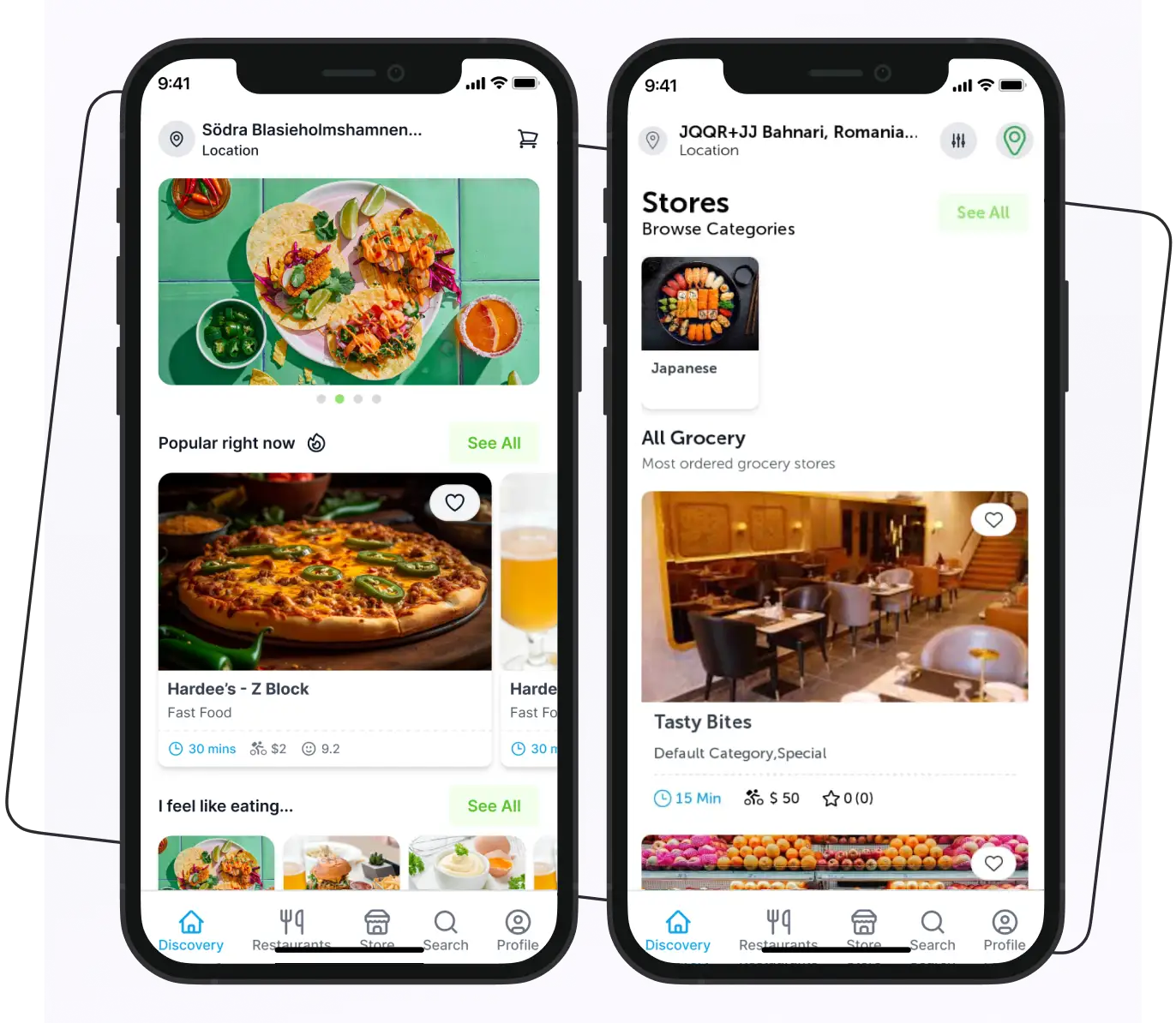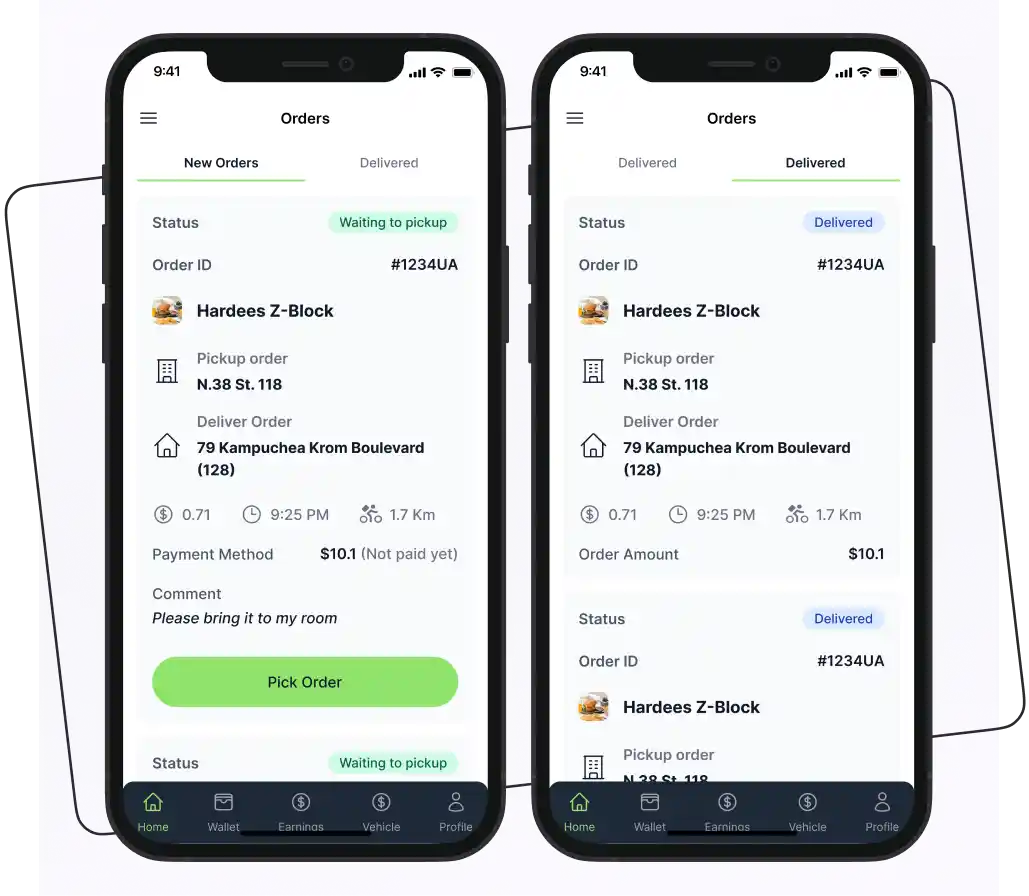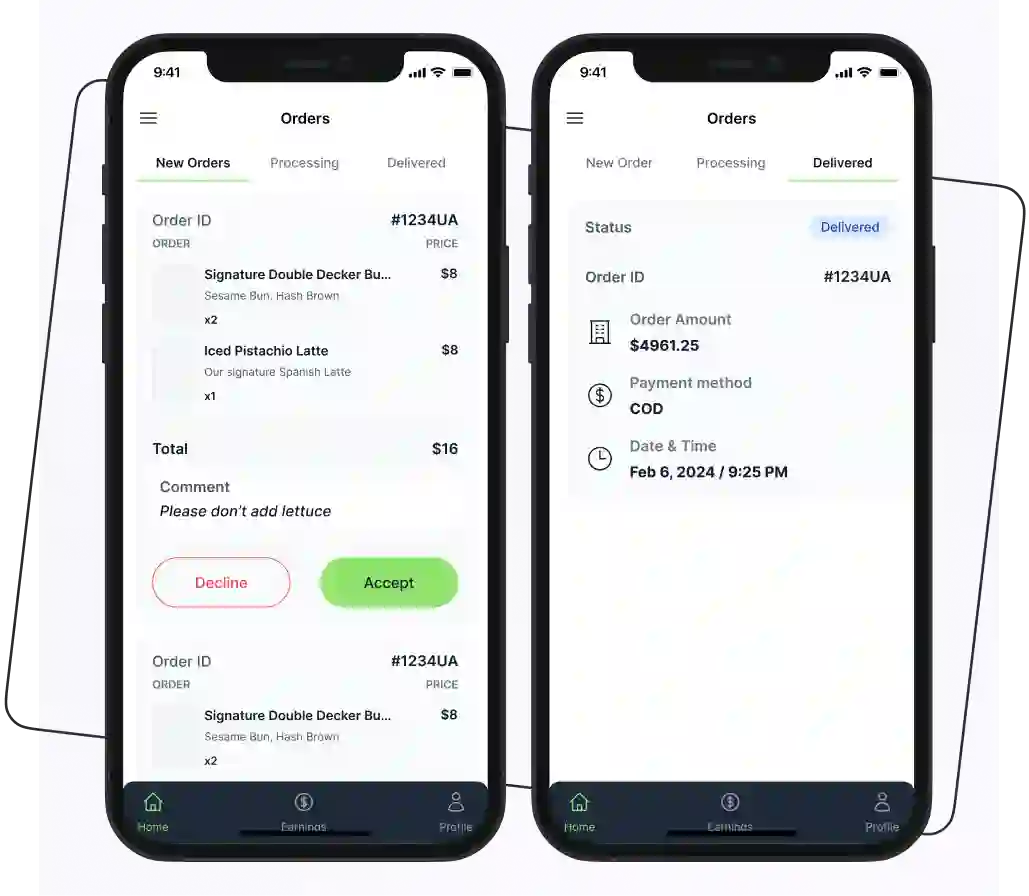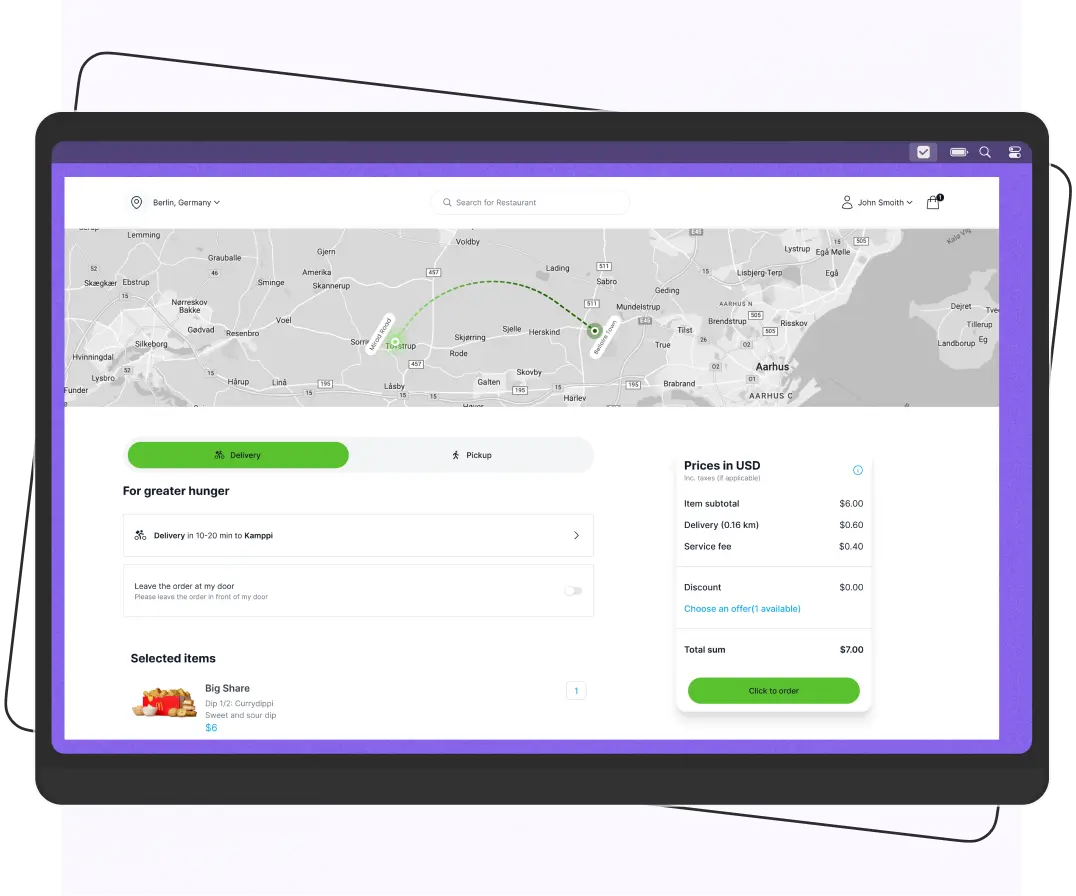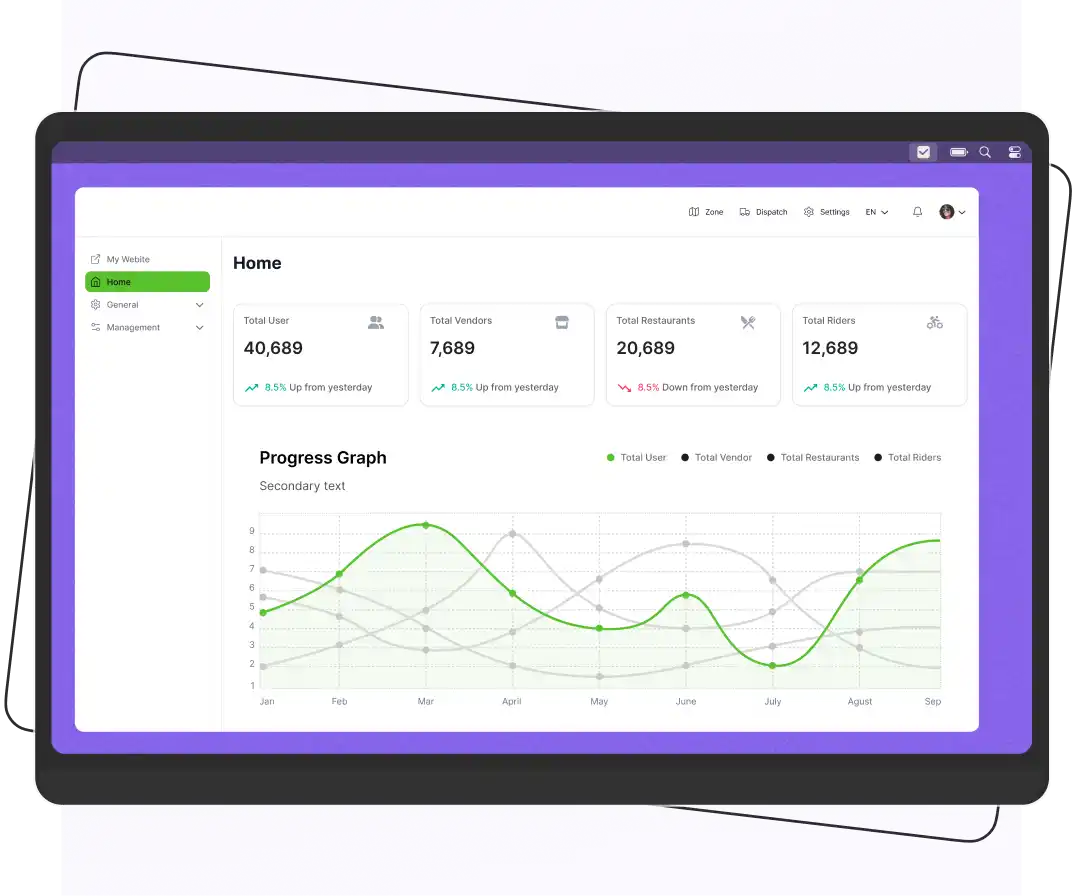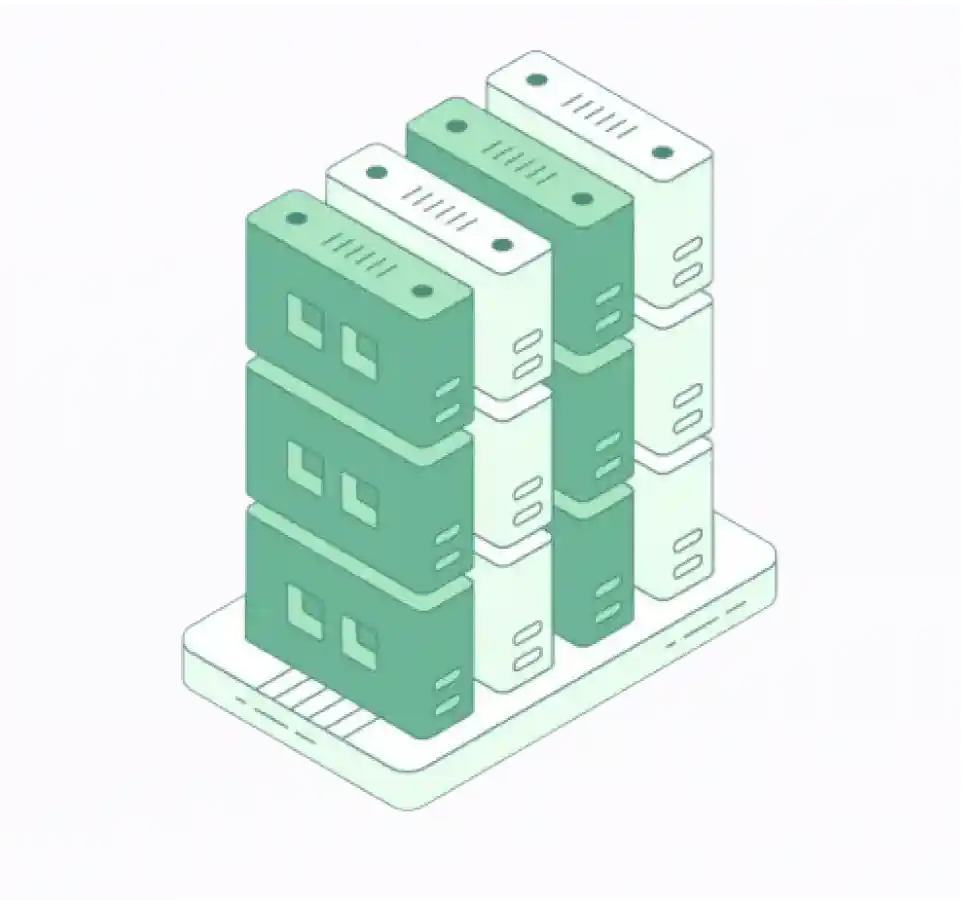
Key Takeaways
- Online food ordering is growing, with 60% of customers preferring to order online and the market is projected to reach $1.85 trillion by 2029.
- Online ordering systems manage operations, automate workflows, and improve customer satisfaction through convenience and speed.
- Latest technologies include:
- Restaurant tablets for faster service and easy payments.
- Omni-channel ordering systems for a better customer experience across platforms.
- Live order tracking to reduce customer queries and enhance transparency.
- Mobile ordering apps that increase reach and reduce labor costs.
- Single-vendor vs Multi-vendor platforms: Choose based on your business size and customer reach goals.
- Key benefits of online ordering:
- Boosted sales and reduced operational errors.
- Improved customer retention through features like quick reordering.
- Lower marketing costs with data-driven strategies.
- Challenges include system integration, UX design, security, support, and initial cost. However, these can be overcome with the right solutions and partners.
Nowadays, 60% of consumers prefer ordering food online, and the global online food delivery market is projected to reach US$ 1.85tn by 2029. Using online ordering technology has become essential for food businesses to stay competitive.
From mobile apps to omnichannel platforms, these innovations improve operations, enhance customer experiences, and boost profits. With 86% of consumers using food delivery services at least once a month, adopting the latest online ordering technology for restaurants is no longer optional; it’s critical for growth.
So, in this blog, we’ll explore the most impactful online ordering tools and trends shaping the food industry today.
What is an Online Ordering System?
An online ordering system allows customers to place orders without visiting the physical store. The restaurant’s online ordering platforms allow customers to place orders and get the food items delivered to their specified location. Several digital ordering systems use the latest technologies to provide a top-notch experience to customers.
The primary purpose of an online ordering system is to:
- Automate the business process
- Connect with customers in a new way
- Provide the customers with convenient and timely deliveries of their orders
Further, online ordering systems are a vital part of food businesses. Food business owners will only succeed in the food delivery industry with them.
Online Restaurant Ordering Technology
Online restaurant ordering technology has become the new norm by providing an efficient and convenient way for customers to place orders.
Look below and learn about the latest online food delivery technology trends.
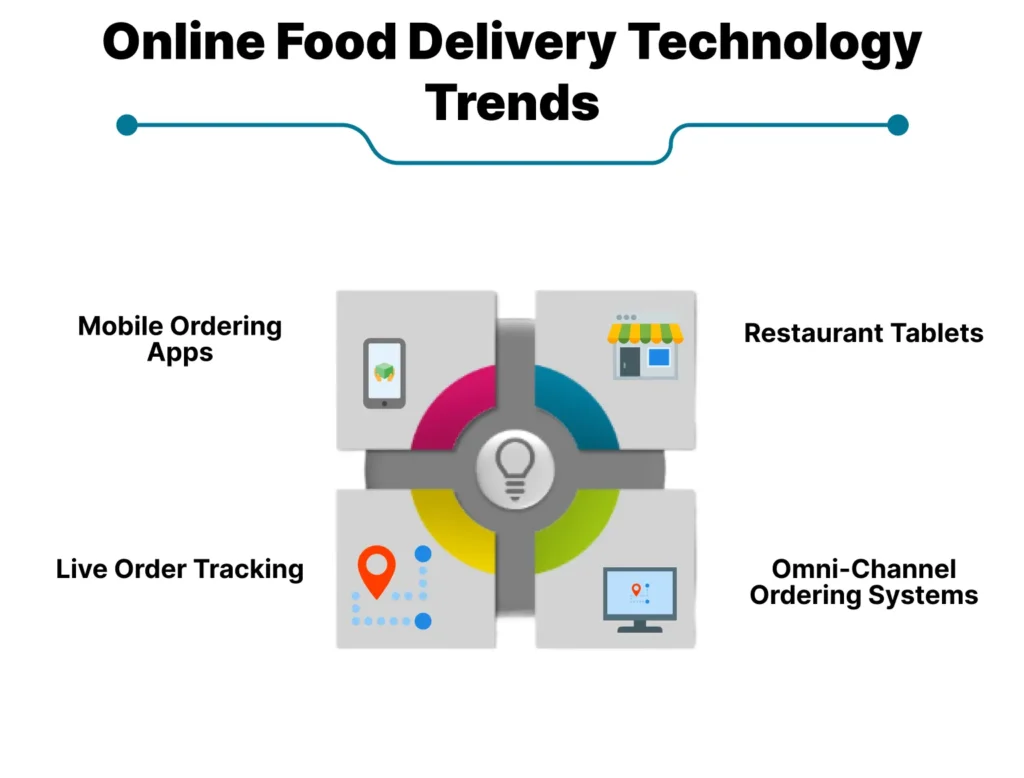
Restaurant Tablets
The new restaurant technology is table payments. It improves the customer experience and streamlines the restaurant operations. Tablets are a new technology that is used in places that cut down the time that servers spend on writing menus.
Make eating more enjoyable by letting customers choose when to leave after paying. Also, you may have even seen long wait times in the tips your workers get. If so, tablets for each table will save you time and trouble.
Example: Grubhub, one of the leading food delivery platforms in the U.S., has successfully integrated restaurant tablets into its operations, providing numerous benefits to its partnered restaurants.
Restaurants that use Grubhub’s tablet technology have reported improved operational efficiency, reduced wait times, and increased customer satisfaction, ultimately contributing to business growth.
With the growing demand for food delivery services, the use of restaurant tablets is a clear example of how technology is transforming the food service industry, helping businesses stay competitive in a digital-first world.
Pros
- Speed up the table turnover rate
- Easily serve more customers
- Payment processing systems are secure
- Customers can quickly pay the bill
Cons
- Maintenance and repairs
- The learning curve for staff
- Security concerns
- Dependence on power and the internet
- Reduced human interaction
Omni-Channel Ordering Systems
Omni channel ordering systems allow customers to choose how to pay and get their food. With an omni-channel ordering system, restaurants can get customer data. The customer data is crucial for digital ordering platforms.
In addition, these systems help with the restaurant’s inventory management system and customer data integration. They can track customer order history and allow you to scale your business with the latest industry trends.
With an omni-channel ordering system, restaurants can provide several ways for customers to pay their bills.
Pros
- Smoothly operate the restaurant POS platform
- Easily collect customer data
- Maintain all orders to streamline operations
Cons
- High implementation costs
- Complex integration
- Cybersecurity risks
Live Order Tracking
It is an innovative restaurant online ordering technology. Customers and restaurants can easily view their order status with live order tracking. Customers know such updates from food preparation to delivery.
Restaurant workers are busy. Many customer calls are eliminated when customers can check order status.
Pros
- Keep customers updated.
- Provide rider details to customers so they can contact them.
- Live order tracking supports kitchen technology by giving restaurant staff a timeframe.
Cons
- Implementation costs
- Regular software updates and maintenance are required
- Expensive for small businesses
Mobile Ordering Apps
Mobile ordering apps are best for small eateries, ghost kitchens, and other food businesses. After the pandemic, food ordering apps have become an essential tool for restaurants. These apps provide convenience, and customers tend to place more orders.
Pros
- Serve more customers
- Minimize labor cost
- Restaurants get orders and deliver without any mistakes
Cons
- Dependence on third-party platforms
- Limited accessibility
- Limited offline functionality
Benefits of Online Ordering Technology
Below are the benefits of online ordering technology.
| For Businesses | For Customers |
| Increased Sales: Online order technology boosts sales for businesses by allowing them to operate 24/7. This extended availability not only caters to a broader audience but also captures customers attention of those who may not have time to visit a physical location. Additionally, it allows businesses to reach customers beyond their immediate geographical area, further expanding their market potential. | Convenience: One of the most significant advantages of online ordering technology for consumers is convenience. Customers can place orders from the comfort of their homes or on the go, eliminating the need to travel to a physical store. This is particularly beneficial for busy people who may not have time to visit a shop during regular business hours. |
| Improved Efficiency: The automation that comes with online ordering technology streamlines various business processes. By digitizing order placement, processing, and payment, businesses can minimize human errors that commonly occur in manual order-taking. This increased efficiency not only speeds up the order fulfillment process but also enhances overall operational productivity. | Quick Reordering: Many online ordering services offer features that facilitate quick reordering of favorite items. Customers can save their preferences and previous orders, allowing them to place repeat orders with just a few clicks. This convenience is particularly appealing to busy consumers who may not have time to search for items each time they shop. |
| Cost-Effective Marketing: Online ordering technology reduces the reliance on traditional advertising methods, which can be costly and less effective. Businesses can use digital marketing strategies to reach their target audience more efficiently. These strategies often have lower costs and higher conversion rates compared to traditional methods. | Access to Reviews and Information: This online ordering trend provides consumers with the ability to access product reviews and detailed information before making a purchase. This transparency allows customers to evaluate the quality and suitability of a product based on the experiences of others. Reading reviews helps consumers feel more confident in their purchasing decisions and can lead to greater satisfaction with their choices. |
Food Delivery Service Technology
Food delivery service technology has changed over the years and helps white-label food delivery app development companies to stay competitive.
The food app development companies provide two types of products, such as:
Single Vendor Food Delivery Management Solution
The single-vendor solution can help elevate your restaurant business. It is an ideal choice for small to large eateries. With a single-vendor food delivery platform, restaurants can build their brand image and attract more customers.
In the competitive food delivery market, captivating imagery is essential. An image blender allows you to create professional-grade menu photos by seamlessly combining multiple shots of your dishes.
Multi Vendor Food Delivery Management Solution
The multi-vendor food delivery management software provides restaurants with a platform where several other restaurants are available. Customers get a wide range of restaurants under one roof. It enables you to handle orders from various customers and locations seamlessly and with ease.
Moreover, the single-vendor app and multi vendor food ordering platform have been created by using the latest technologies, which include:
| Component | Tech Stack |
| API Server | Node.js, Express.js, Python (Flask/Django), Ruby on Rails |
| Web Dashboard | React, Angular, or Vue.js for frontend; Node.js or Python for backend |
| Mobile App | React Native, Flutter for cross-platform; Swift (iOS) and Kotlin (Android) for native apps |
| Restaurant App | React Native or Flutter for cross-platform; Swift (iOS) and Kotlin (Android) for native apps |
| Rider App | React Native or Flutter for cross-platform; Swift (iOS) and Kotlin (Android) for native apps |
| Customer Web App | React, Angular, or Vue.js for frontend; Node.js or Python for backend |
Key Challenges and Solutions in Implementing the Online Ordering Technology
Implementing online ordering technology can enhance a business’s efficiency and customer experience, but it also comes with several challenges.
Here are some key challenges to consider.
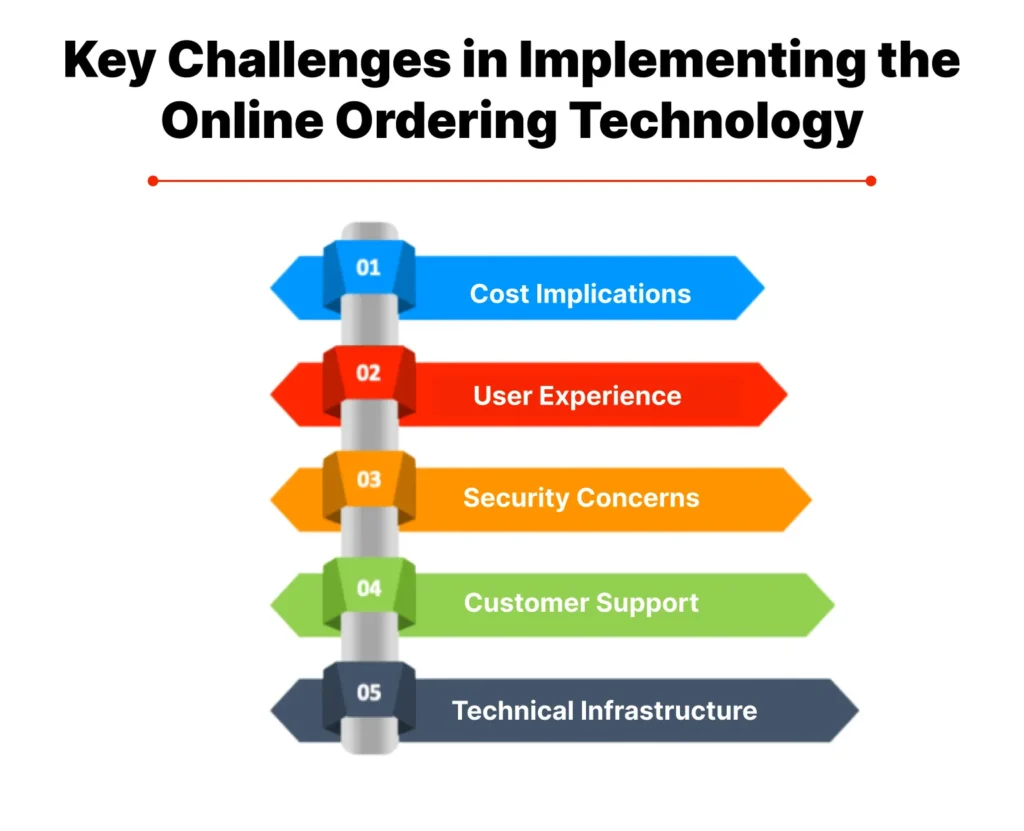
1. Technical Infrastructure
Challenge: Integrating the online ordering system with existing inventory, sales, and customer management systems can be complex.
Solution
- Evaluate current systems to identify integration points and potential issues.
- Opt for online ordering platforms that offer APIs or plugins specifically designed for seamless integration.
- Ensure reliable technology infrastructure with backup systems and regular performance testing to minimize downtime, especially during peak times.
2. User Experience
Challenge: Creating a user-friendly interface that guides customers through the ordering process is critical.
Solution
- Use user testing and feedback to design an intuitive interface that simplifies navigation.
- Implement a responsive design that adapts to various devices, ensuring an optimal experience on both desktop and mobile.
- Minimize the number of steps required to complete an order and offer guest checkout options to reduce cart abandonment.
3. Security Concerns
Challenge: Protecting sensitive customer information from breaches is crucial.
Solution
- Use encryption for data transmission and secure payment gateways to protect payment information.
- Employ advanced technologies such as AI to monitor transactions for suspicious activity and flag potentially fraudulent orders.
4. Customer Support
Challenge: Providing effective customer support for online orders requires additional resources.
Solution
- Offer training to employees on the new system, focusing on common customer issues and how to resolve them.
- Implement live chat, email, and phone support options to provide timely assistance.
- Develop FAQs, instructional videos, and a knowledge base to empower customers to resolve issues independently.
5. Cost Implications
Challenge: The upfront costs of setting up online ordering technology can be significant, along with ongoing maintenance expenses.
Solution
- Create a detailed budget that accounts for both initial investments and ongoing costs, including maintenance and support.
- Use cloud-based platforms that reduce upfront hardware costs and allow for scalable pricing based on usage.
FAQs
1. What is the best online ordering system for restaurants?
Below is a list of the best online ordering systems for restaurants.
- BentoBox
- Toast
- Bbot
- Upserve
- Popmenu
2. What is AI ordering?
AI ordering refers to the use of artificial intelligence technologies to automate and optimize the process of placing orders in retail or food service.
3. Which model is best for an online food ordering system?
The aggregator business model is the best model for an online food ordering system. This business model allows restaurants to register and function on a single platform.
4. Which platform is best for ordering food?
UberEats, Grubhub, DoorDash, and Postmates are the best platforms for ordering food from various restaurants.
5. What technology is used in online shopping?
Online shopping uses a variety of technologies, including:
- E-commerce platforms for product listings and transactions
- Payment gateways for secure financial transactions
- Web analytics tools for tracking user behavior
6. What software do restaurants use to take orders?
Restaurants use various softwares to take orders, but POS (point of Sale) is the most common. It handles everything from order taking and payment processing to table management and sales tracking.
7. What is the best meal delivery system?
The best meal delivery system often depends on personal preferences, but popular options like Freshly and HelloFresh are praised for their variety and quality.
8. What is the largest food delivery platform in the US?
The largest food delivery platform in the U.S. is DoorDash, which holds a significant market share and offers a wide range of restaurant options.
Supercharge your deliveries with Enatega.
Launch NowConclusion
Online ordering technology has reshaped the food delivery industry and the way we experience dining. Some restaurant owners use AI in their business, so some use other technologies to thrive in an increasingly digital and competitive market.
So, if you want to build a food delivery app using online ordering technology, consult Enatega. We have experience in building food delivery applications with the latest technologies.
Book a demo with us and get the customized app like Foodpanda clone according to your needs.












 IOS
IOS Android
Android Web
Web